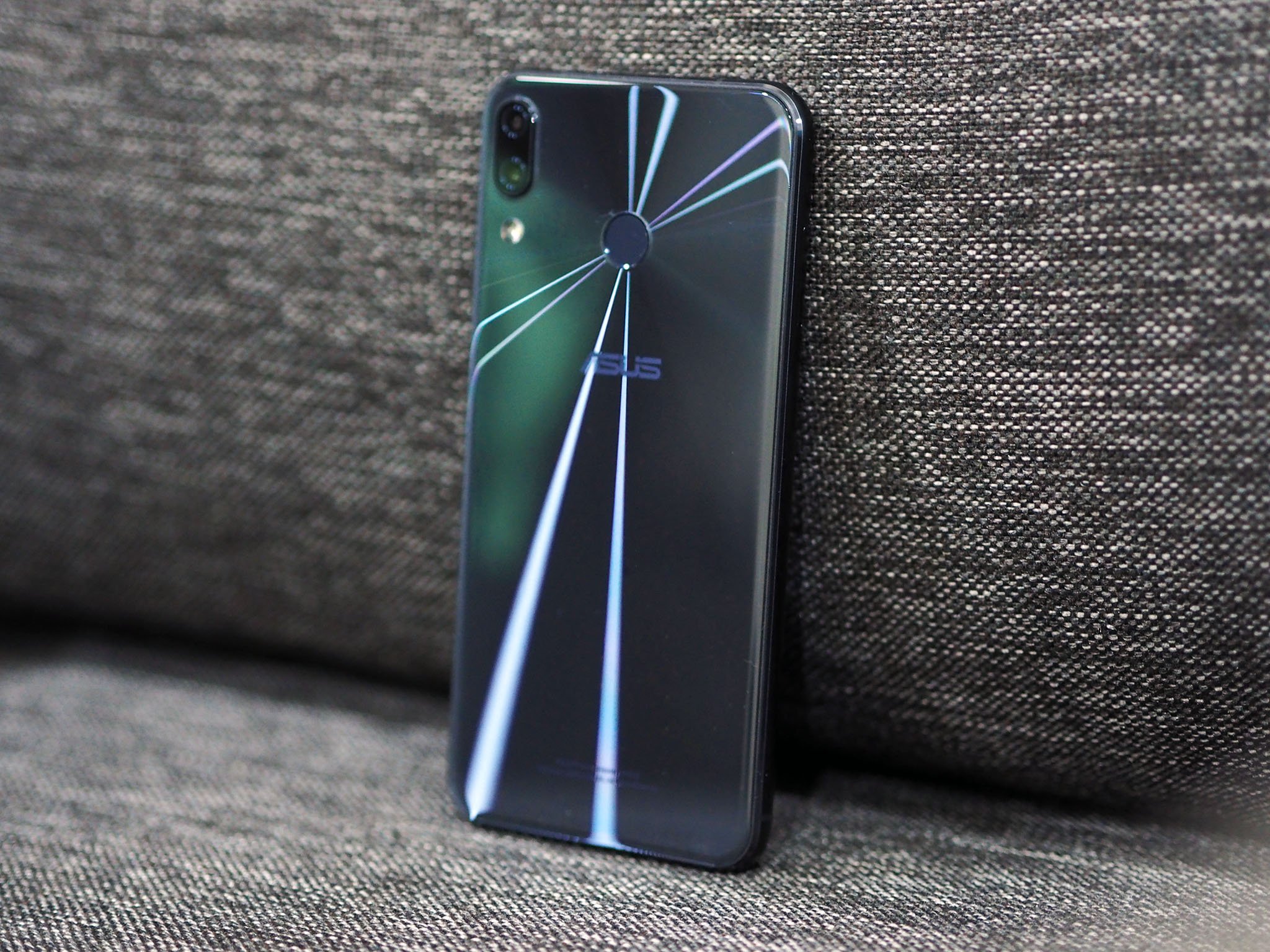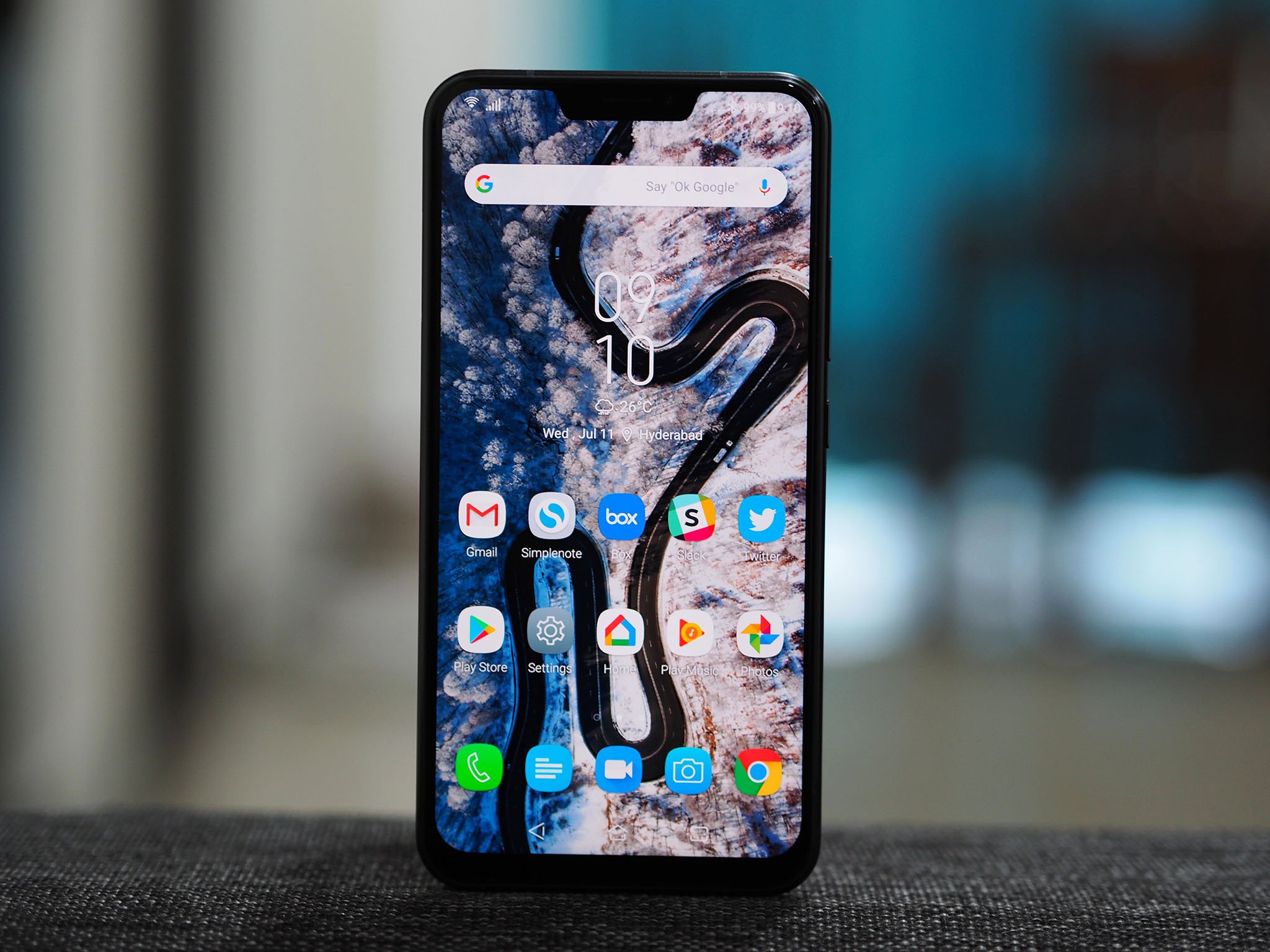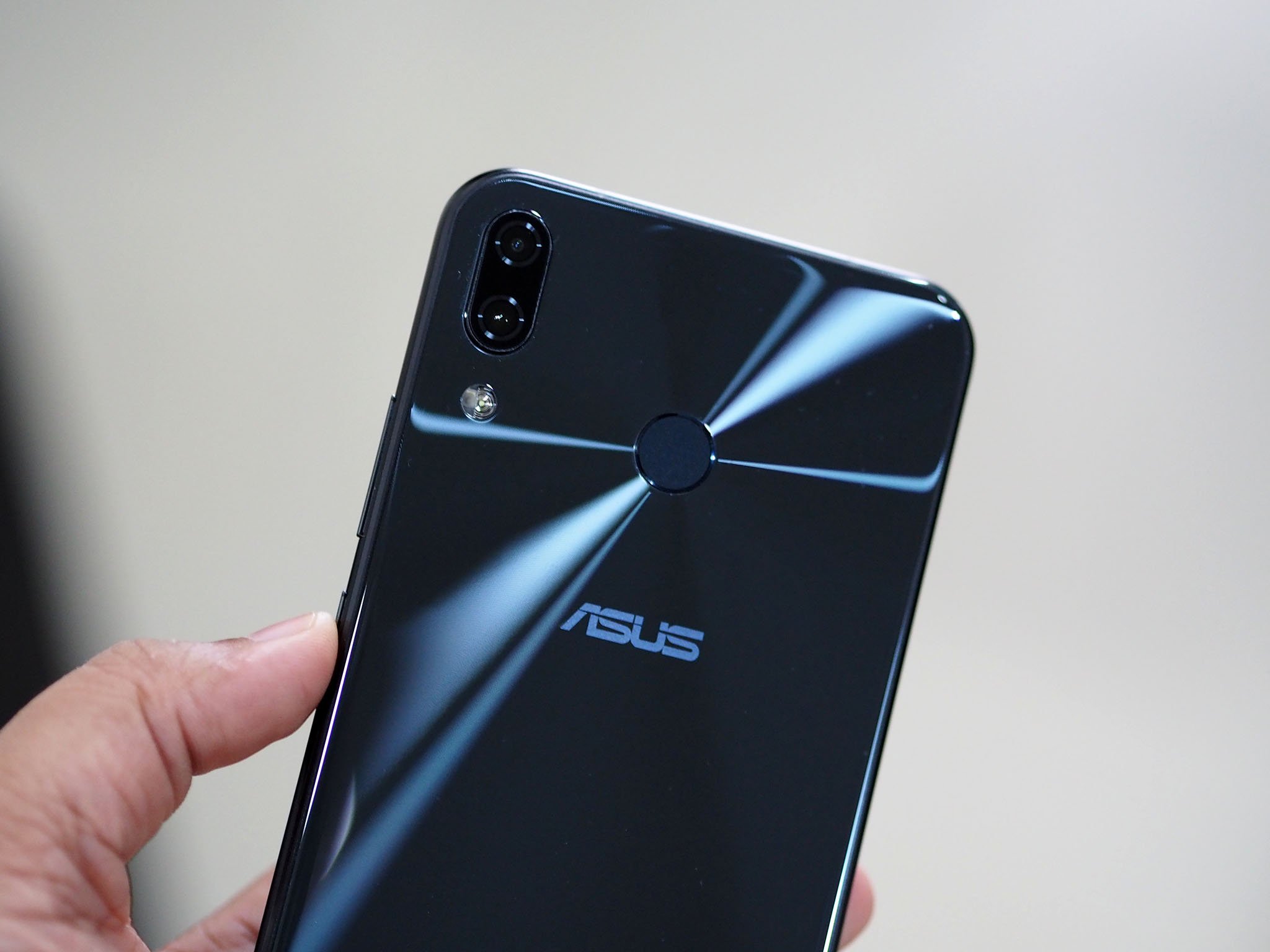ASUS ZenFone 5Z review: A compelling alternative to the OnePlus 6
The ZenFone 5Z delivers incredible performance at less than half the cost of 'true' flagships.
After a strong initial showing with the ZenFone series, ASUS faded from relevance in the last few years owing to a combination of uninspiring designs and inability to match up to the likes of Xiaomi, OnePlus, and Honor. OnePlus, in particular, has come to dominate the affordable flagship space, with the OnePlus 6 now the benchmark that other $500 phones have to measure up to. That's particularly true in markets like India, where OnePlus is virtually unchallenged in this space.
ASUS is now looking to challenge OnePlus' dominance in this segment. The Taiwanese manufacturer has been dormant in India for a few years, but that has changed in recent months. ASUS unveiled the ZenFone Max Pro M1 in the budget segment a few months ago, taking the fight to Xiaomi's Redmi Note 5 Pro and coming out on top. It isn't every day that you see a brand undercut Xiaomi, but ASUS managed to do just that with the M1.
Now, the manufacturer is looking to do the same in the premium segment with the ZenFone 5Z. From the onset, it's clear that ASUS is going after OnePlus, with its marketing materials making endless references to the OnePlus 6. That's because the ZenFone 5Z shares a lot of the same hardware as the OnePlus 6 — it is powered by a Snapdragon 845, and comes with 8GB of RAM and 256GB of storage.
More importantly, however, ASUS has once again managed to undercut the incumbent, with the ZenFone 5Z retailing for ₹5,000 ($75) less than the OnePlus 6. So does it manage to dethrone the OnePlus 6 as the best $500 phone? Let's find out.
ASUS ZenFone 5Z
Price: ₹29,999 ($435)
Bottom line: If you're looking from a value standpoint, the ZenFone 5Z is an easy sell. You're getting the same hardware as the OnePlus 6 at a lower price, and ZenUI is no longer infuriating to use. Leave it to ASUS to come up with one of the best phones of 2018.
Pros:
- Gorgeous design
- Incredible performance
- Well-executed AI features
- Great value for money
- Decent camera
Cons:
- Sizeable notch
- No water resistance
- No wireless charging
- Limited global availability
About this review
I (Harish Jonnalagadda) am writing this review after using the ZenFone 5Z for over two weeks in Hyderabad, India. The phone was connected to Jio's 4G network, and received numerous stability fixes over the course of the review. ASUS India provided the device to Android Central for review.
ASUS ZenFone 5Z Hardware
ASUS was one of the first Android manufacturers to adopt the notch, and the company made no attempt to hide the fact that the design was inspired by the iPhone X. If anything, ASUS invited those comparisons, stating that the ZenFone series offers a similar design aesthetic as Apple's flagship at less than half the cost.
With a majority of Android phones in this segment now offering a notch, the ZenFone 5Z's design isn't an outlier, but the norm. The front of the phone is dominated by a 6.2-inch IPS LCD display with a sizeable notch at the top and a chin at the bottom. The notch is wider than the one you'd find on the OnePlus 6, and the chin at the bottom is also slightly thicker. The phone has a glass back as well, and both the front and back offer subtle curves thanks to 2.5D glass and are protected by a layer of Gorilla Glass 3.
The ZenFone 5Z is available in Midnight Blue and Meteor Silver, and if you ignore the obvious iPhone comparison, the design is stunning. The rounded corners, chamfered edges, and the dark blue coating underneath the glass back make for a gorgeous device.
The power and volume buttons are located on the right, and they offer excellent tactile feedback. The phone retains a 3.5mm jack, and you get dual speakers that sound great. The fingerprint sensor is positioned right where you rest your index finger at the back, making it highly convenient to unlock the phone. There's also a face unlock feature that works reliably well most of the time, but it ran into issues in low-light scenarios.
The 6.2-inch Super IPS+ display gets sufficiently bright for outdoor use, and colors are punchy. The FHD+ resolution is more than adequate, and the screen sports a 19:9 ratio due to the notch. There's an option to hide the notch entirely, which results in black bars on either side of the cutout. However, you will be able to make out the black bars when using the phone outdoors as the panel doesn't have the same deep contrast levels as an AMOLED display.
For its part, ASUS lets you customize the color temperature to your liking, and there's even an auto mode that relies on the camera sensor to detect the ambient lighting levels in your environment, adjusting the colors accordingly. For instance, the mode switches the screen to warmer colors at night to reduce eye strain and boosts colors when outdoors.
ASUS offers the standard set of display features as well — there's the option to change display scaling, adjusting the font size and type, and you get a standard blue light filter that can be customized to kick in at a particular time. There's also a Smart Screen feature that keeps the display switched on past the screen timeout when the device is held upright.
| Spec | ASUS ZenFone 5Z |
|---|---|
| Screen | 6.2-inch IPS LCD |
| SoC | 2.8GHz Snapdragon 845 |
| RAM | 6/8GB |
| Storage | 64/128/256GB |
| Camera 1 | 12MP rear, ƒ/1.8, OIS |
| Camera 2 | 8MP rear, ƒ/2.0 |
| Battery | 3300mAh fast charge |
| Connectivity | Wi-Fi ac, BT 5.0 |
| Security | Fingerprint, face unlock |
| Dimensions | 153 x 75.7 x 7.9mm |
| Weight | 155g |
| Colors | Midnight Blue, Meteor Silver |
| Price | $435, $480, $540 |
As for the hardware on offer, the ZenFone 5Z is powered by Qualcomm's latest Snapdragon 845, and you can pick up a variant with 8GB of RAM and 256GB of storage. There's even a hybrid SIM card tray, with the secondary SIM card slot doubling up as a microSD slot that can accommodate cards up to 2TB. The phone facilitates dual 4G, allowing you to use the 4G connection on both SIM cards. Other connectivity options include Wi-Fi ac, Bluetooth 5.0 NFC, and FM radio.
ASUS doesn't skimp on the accessories either, and you get an 18W charger along with a clear case and Hi-Res-certified earbuds. The phone has a DAC that boosts audio performance when using wired gear, and AptX if you prefer to go wireless. ASUS also has an Audio Wizard feature in the settings that lets you tweak the audio profile.
As you'd imagine for a phone that's running the latest hardware available today, the ZenFone 5Z is a beast when it comes to day-to-day usage. You're not going to notice any lag or stutter anywhere, and Adreno 630 handles the most visually intensive titles without any hiccups. ASUS significantly pared back the customizations in ZenUI over the last 12 months, making the ZenFone 5Z a delight to use.
The ZenFone 5Z is one of the fastest phones you can buy today.
If the notch is the defining hardware trend of 2018, AI is its software equivalent. We've seen several manufacturers offer AI-assisted features to enhance camera capabilities of their devices, and ASUS has gone all-out in this area. The Taiwanese manufacturer offers a smorgasbord of AI features on the ZenFone 5Z, ranging from everything to receiving calls, charging the battery, and obviously the camera. But more on that later.
On the subject of battery, the 3300mAh battery on the ZenFone 5Z manages to deliver a day's worth of usage consistently. I had no trouble getting to the end of the day with at least 15% battery left, even on days when I was predominantly using cellular data. ASUS offers several battery modes that eke out the most out of the battery by turning down the brightness, killing background app usage, and throttling the chipset.
The phone is compatible with Quick Charge 3.0, and ASUS bundles an 18W charger in the box that tops up the device from zero to 100% in just over an hour and a half. If you're looking to top up in the middle of the day, you'll be able to get up to a 60% charge in just under 40 minutes.
One of the few downsides on the hardware front is that there's no wireless charging in spite of a glass back. ASUS doesn't make any mention of water resistance, either, so you're better off not taking the ZenFone 5Z anywhere near a water body.
ASUS ZenFone 5 Software
ASUS overhauled ZenUI over the course of the last year, and while the interface still sports a few distinct tweaks, the company is now focusing on providing a clutter-free experience. To that effect, the company got rid of stock apps that served the same function as Google's offerings, and the ZenFone 5Z comes with a minimal set of pre-installed apps that include Facebook, WhatsApp, Facebook Messenger, and ASUS' own Go2Pay mobile wallet service. There's also the option to uninstall the pre-installed apps.
The current ZenUI interface feels much more modern, with clean lines and a white color scheme interlaced with blue accents. Overall, it's a pleasant change from what ASUS was offering just a few years ago.
To facilitate the gamut of AI features available on the device, the ZenFone 5Z takes full advantage of the AI engine in the Snapdragon 845. One of the AI features is Optiflex, which boosts app launch times by predicting apps you're likely to load based on your usage habits. I wasn't able to notice dramatically-improved launch times, but this feature will likely come to be handy after using the phone for a few months.
ASUS offers a smorgasbord of AI features on the ZenFone 5Z, and it's not just marketing fluff.
The ZenFone 5Z has three microphones placed around the device, and there's an AI-assisted call feature that automatically adjusts volume levels so the recipient can always hear you. This feature is particularly useful when you're making calls in a noisy environment. On the flip side, there's AI Ringtone, which adjusts the volume of incoming calls based on the ambient noise levels in your surroundings. Say if you're in a meeting and forgot to switch the phone to mute, AI Ringtone will detect the ambient noise and put the ringer at a lower volume. Conversely, if you're at a mall, the volume will automatically be boosted to its highest setting so you can hear the ringtone.
AI Charging is designed to improve battery longevity by leveraging machine learning to adjust the charging speed based on when you plug in the phone. If you're charging the device overnight, the phone charges up to 80% and then cuts off until a predetermined time, after which it will top up to 100%. ASUS says this will significantly improve battery health over time, and the feature itself takes about a week to learn your usage habits. There's also a scheduled charging mode that lets you manually specify the charging times.
Alongside the AI features, ASUS also offers its own take on Animoji, dubbed ZeniMoji. The only difference is that ASUS' implementation is nowhere as refined, and it just doesn't work for the most part.
The ZenFone 5Z runs Android 8.0 Oreo out of the box with the April patch, and ASUS says it is committing to timely updates. While it didn't specify a timeline, the manufacturer did state that the Android P update will be making its way to the device. Software updates are one area where ASUS lagged behind its rivals in the past, and while it says that things are different this time around, we'll have to wait and see if that's indeed the case.
ASUS ZenFone 5 Camera
The ZenFone 5Z has dual cameras arrayed vertically at the back, with the secondary sensor offering a wide-angle lens, à la LG. The primary shooter is a 12MP Sony IMX363 sensor, the same one we've seen in the likes of the Mi Mix 2S and the Vivo NEX. The secondary 8MP sensor facilitates 120-degree field of view, and ASUS has relied heavily on AI-based features to differentiate the camera from other devices in this category.
The camera app is easy to get started off with: you get toggles for HDR, flash, and the timer at the top, and the ability to switch between the primary and wide-angle cameras and change the shooting mode. You'll be able to access all the shooting modes with a swipe up gesture, while a swipe down reveals all the filters. There's also a manual mode that lets you adjust the white balance, exposure, and shutter speed.
ASUS has an AI-based scene detection feature that automatically selects the optimal shooting modes for a particular scene. If you're taking photos at night, the camera automatically switches to night mode, and ASUS says the camera can recognize 16 modes in total, including food, animals, nature shots, people, and more.
The 1.4um pixel size and f/1.8 lens allow the ZenFone 5Z to take impressive photos in daylight conditions, and the phone does a decent job in low or artificial lighting as well.
ASUS ZenFone 5 Review
One reason for OnePlus' strong showing in markets like India is aggressive pricing. In the U.S., you can pick up a Galaxy S9 for around $300 more than what you'd shell out for a OnePlus 6, but that isn't the case in most parts of the world. In India, for instance, the Galaxy S9 and the Pixel 2 XL start off at well over $1,000, making them unattainable to a majority of the populace. By contrast, the OnePlus 6 retails for the equivalent of $510 in India, or half the cost of a Galaxy S9. It's no wonder, then, that India is OnePlus' largest global market, with the country accounting for over a third of the Chinese manufacturer's sales.
With traditional flagships priced well out of reach of most users, the $500 price point is where brands duke it out. There's no dearth of choice in this segment — the Mi Mix 2, Galaxy A8+ and more recently the Honor 10 are all available at around the $500 mark, and they're all looking to do one thing: knock OnePlus off its perch.
The ZenFone 5Z is the closest anyone has come to doing that. The device is the most affordable option yet if you're looking to pick up a phone powered by the Snapdragon 845. The design is evocative, the performance on offer is on par with the likes of the Pixel 2, and the camera holds its own. ASUS has also managed to do a great job with its slew of AI features — they offer worthwhile functionality without being overbearing.
The device isn't without its drawbacks — you don't get wireless charging or water resistance, and ASUS' shoddy track record when it comes to software updates is worrisome. But as an overall package, the ZenFone 5Z is a worthy alternative to the OnePlus 6.
The phone is available in three variants: the base model with 6GB of RAM and 64GB of storage is available for ₹29,999 ($435), the variant with 6GB of RAM and 128GB of storage retails for ₹32,999 ($480), and the version with 8GB of RAM and 256GB of internal storage is available for ₹36,999 ($540). Minor shortcomings aside, the ZenFone 5Z is one of the best phones you can buy in 2018.
If you're looking to pick up a phone that offers the most value for your money, the ZenFone 5Z is a great choice.
#Google #Android #Smartphones #OS #News @ndrdnws #ndrdnws #AndroidNews











